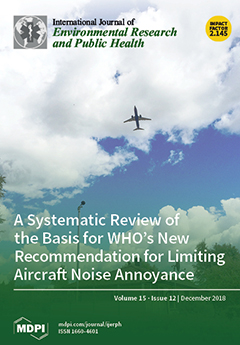Open AccessArticle
Patient Satisfaction with Community Pharmacies Services: A Cross-Sectional Survey from Punjab; Pakistan
by
Muhammad Majid Aziz 1,2,3,4, Wenjing Ji 1,2,3,4, Imran Masood 5, Muhammad Farooq 6, Muhammad Zubair Malik 7, Jie Chang 1,2,3,4, Minghuan Jiang 1,2,3,4, Naveel Atif 1,2,3,4,8 and Yu Fang 1,2,3,4,*
1
Department of Pharmacy Administration and Clinical Pharmacy, School of Pharmacy, Xi’an Jiaotong University, Xi’an 710061, China
2
The Center for Drug Safety and Policy Research, Xi’an Jiaotong University, Xi’an 710061, China
3
Global Health Institute, Xi’an Jiaotong University, Xi’an 710061, China
4
Shaanxi Center for Health Reform and Development Research, Xi’an 710061, China
5
Department of Pharmacy, Faculty of Pharmacy and Alternative Medicine, Railway Road Campus, Islamia University, Bahawalpur 63100, Pakistan
6
Faculty of pharmacy, University of Lahore, Lahore 54000, Pakistan
7
Department of Pharmacy, University of Sargodha, University Road Sargodha, Punjab 40100, Pakistan
8
University College of Pharmacy, University of the Punjab, Shahra-i-Quaid-e-Azam, Lahore 54000, Pakistan
Cited by 30 | Viewed by 8018
Abstract
Purpose: Patient satisfaction can identify specific areas of improvement in community pharmacy services. Currently in Pakistan, no evidence exists in this regard. This study was conducted to determine the needs of patients and the current standards of pharmacies.
Methods: A cross-sectional
[...] Read more.
Purpose: Patient satisfaction can identify specific areas of improvement in community pharmacy services. Currently in Pakistan, no evidence exists in this regard. This study was conducted to determine the needs of patients and the current standards of pharmacies.
Methods: A cross-sectional study was conducted between October 2016 and June 2017. A pilot tested questionnaire was used to collected the data from 1088 patients of 544 community pharmacies. Likert scale and one way ANOVA was used to analyze the data.
Results: The response rate of community pharmacies was 80% and that of purchasers was 68.1%. The mean age of participants was 35.2 years. The mean overall satisfaction score of participants was 2.78/5.00. Many patients were dissatisfied (1.65/5.00) with parking facilities provided by pharmacies. Pharmacy service time fulfilled the requirements of most patients (4.16/5.00). The counseling person’s good attitude (3.99/5.00) was credited by purchasers. Level of patient satisfaction with the availability of medicines (3.19/5.00), safe storage of medicines in pharmacy stores (3.66/5.00), and quality of medicines (3.41/5.00) were almost moderate. Many patients were very satisfied (4.35/5.00) with readable instructions for their medications. Approximately half of the patients were dissatisfied with the waiting time. Many patients were also dissatisfied (2.28/5.00) with the knowledge of the counseling person. Patients perceived that staff interest in patient recovery (2.24/5.00) was low. No significant difference in level of satisfaction with regard to participant’s characteristics was found.
Conclusions: The current study demonstrated a low level of patient satisfaction with regard to community pharmacy services in Pakistan. These services need improvement.
Full article





